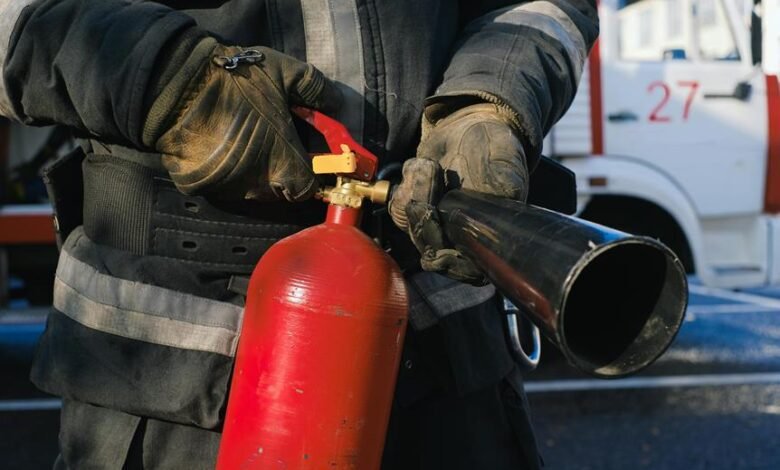Emergency Preparedness for Tenants What to Do Before and During an Incident

Emergency preparedness is a critical aspect for tenants, as it empowers them to navigate unforeseen incidents effectively. Understanding the nuances of lease agreements is a fundamental step, allowing tenants to discern their rights and responsibilities in times of crisis. Furthermore, having a well-thought-out emergency plan and a stocked kit can be invaluable. However, the relationship between tenants and landlords during emergencies often plays a pivotal role in the overall safety and response. What strategies can tenants employ to enhance this relationship and ensure their safety in various scenarios?
Understanding Your Lease Agreement
Many tenants may underestimate the significance of thoroughly understanding their lease agreement, yet this document serves as a crucial foundation for emergency preparedness.
Familiarity with lease rights and tenant responsibilities enables individuals to navigate potential crises effectively. This understanding empowers tenants to advocate for necessary safety measures, ensures compliance with regulations, and fosters an environment conducive to personal autonomy during emergencies.
Developing an Emergency Plan
A comprehensive understanding of your lease agreement lays the groundwork for effective emergency preparedness, highlighting the importance of developing an emergency plan tailored to your living situation.
Conduct a risk assessment to identify potential hazards specific to your area. Establish clear evacuation routes, ensuring all household members are familiar with them.
Regularly review and update your plan to adapt to any changes in your environment or circumstances.
Assembling an Emergency Kit
An effective emergency kit serves as a vital resource in times of crisis, ensuring that tenants are prepared to face unexpected challenges.
To assemble a comprehensive kit, consider including the following essential supplies:
- A well-stocked first aid kit
- Non-perishable food items and water
- Flashlights and batteries
These items will empower tenants to navigate emergencies with confidence and resilience.
Communicating With Your Landlord
Effective communication with your landlord is a fundamental aspect of emergency preparedness for tenants.
Understanding tenant responsibilities and landlord expectations is crucial. Tenants should proactively inform landlords of any maintenance issues that could exacerbate emergencies, while landlords must provide essential emergency contact information.
This mutual communication fosters a transparent relationship, ensuring both parties are prepared and informed during critical situations, ultimately enhancing safety and security.
Staying Informed During Emergencies
Staying informed during emergencies is essential for tenants to ensure their safety and readiness.
To achieve this, consider the following actions:
- Sign up for emergency alerts to receive timely notifications.
- Familiarize yourself with local resources, including shelters and medical facilities.
- Maintain a list of emergency contacts for quick communication.
Being proactive in information gathering empowers tenants to respond effectively during crises.
Frequently Asked Questions
What Should I Do if I Have Pets During an Emergency?
In a pet emergency, ensure your evacuation plan includes provisions for your pets. Prepare a pet kit with food, water, medication, and identification. Familiarize pets with carriers to facilitate a smooth evacuation during crises.
How Can I Access Emergency Resources in My Neighborhood?
In the tapestry of community resilience, accessing local resources and community networks is essential. Utilize online platforms, local government websites, and social media groups to discover vital support services available in your neighborhood during emergencies.
What if I Have a Disability and Need Assistance?
Individuals with disabilities should ensure their emergency plan includes specific accommodations. Collaborate with local services to identify accessible resources and establish communication channels, ensuring timely assistance during incidents, thereby promoting safety and independence in crisis situations.
Are There Specific Evacuation Routes for My Building?
Consider the intricate pathways of your building layout, where emergency drills illuminate designated evacuation routes. Familiarizing yourself with these routes empowers freedom of movement, ensuring a swift and organized response during unforeseen incidents. Your safety matters.
How Can I Get Updates if the Power Goes Out?
During a power outage, utilize diverse communication methods such as mobile data, battery-powered radios, or community alert systems to receive timely updates. Staying informed is crucial for maintaining safety and effectively responding to the situation.
Conclusion
In conclusion, effective emergency preparedness for tenants necessitates a multifaceted approach that encompasses a thorough understanding of lease agreements, the development of robust emergency plans, and the assembly of essential supplies. Research indicates that proactive preparedness significantly enhances resilience during crises, suggesting that tenants who engage in comprehensive planning are better equipped to navigate emergencies. By fostering clear communication with landlords and remaining informed through local alerts, tenants can mitigate risks and ensure their safety in unpredictable situations.




